A Waterfowler’s Retirement Plan
Sage advice to help you prepare for the opportunities and challenges of hunting in your golden years
Sage advice to help you prepare for the opportunities and challenges of hunting in your golden years

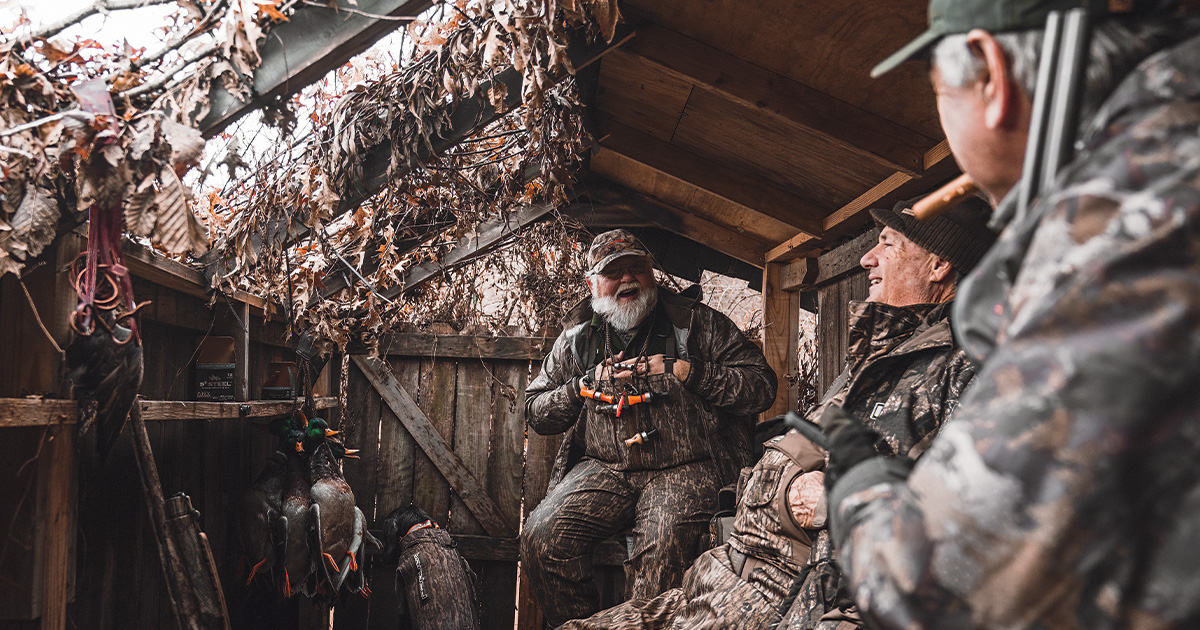
Late-season duck hunting isn’t for sissies, and I’m not talking about toughing it out through January snow squalls. I’m talking about duck hunting late in our personal seasons. We all need to think about how we intend to chase feathers when much of our hair is gray (or gone) and only one knee is original equipment. Just like we plan for the financial needs of our golden years, aging duck and goose hunters need to plan for retirement with strategies for staying active, engaged, and liquid over the long haul. And again—not the long haul with the decoy sled.
Personally, I don’t want to go gentle into that good night. I want to limp home on my last duck hunt, thoroughly spent and riding on tires with barely enough tread to get me home. I want my friends to whisper their worries that I really shouldn’t be out there all by myself.
But that’s a pretty good piece down the tracks, I hope. The best approach for now is to have a plan, and here’s my own retirement plan for duck hunting, devised with a little help from a few wise and weathered duck and goose fanatics.
“Wise and weathered.” Doesn’t that sound so much better than “old?”
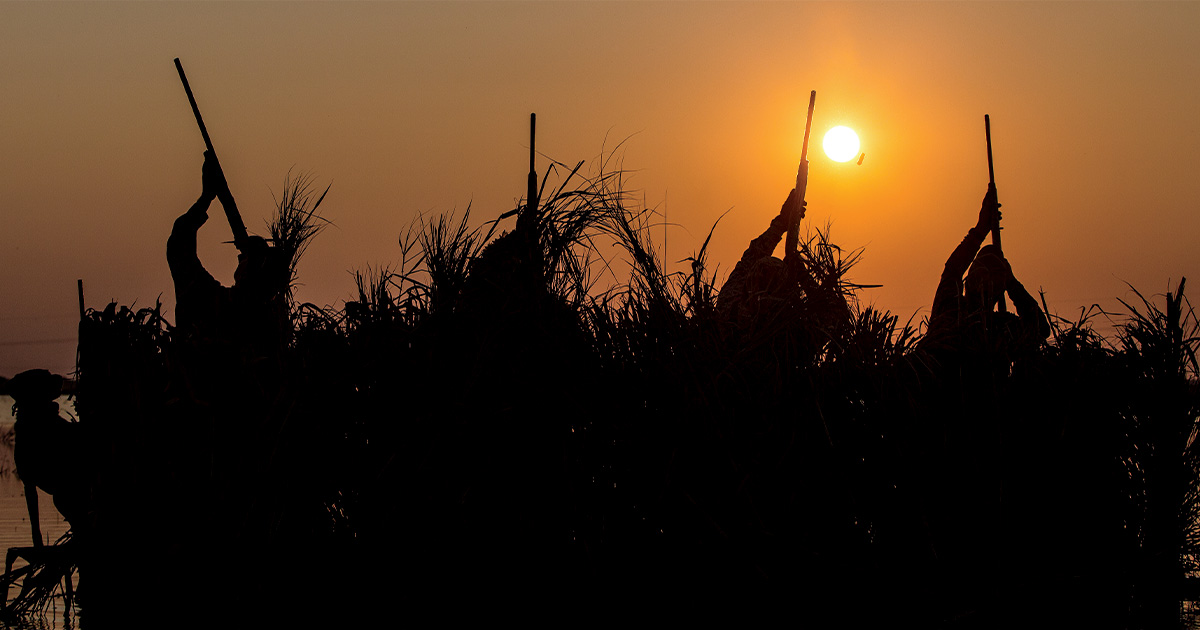
“None are so old,” wrote Henry David Thoreau, “as those who have outlived enthusiasm.” I’m no Thoreau, but I have a related mantra, made quasi-famous by Clint Eastwood and Toby Keith: “Don’t let the old man in.” If you’re even knocking on the door of old, you know exactly what it means.
As hunters age, we have a harder time maintaining the relationships that make waterfowling such a meaningful social endeavor. Friends get sick, get fat, or even worse, get into a late-in-life golf habit. Losing hunting partners is one of the most common reasons hunters fall away from the sport. To stay active and involved over the long haul takes effort and planning. Just like staying physically fit for the hunt, motivation and desire need to be exercised to stay strong and healthy.
To do that, I’ve devised a short list of annual hunts I vow to never miss. There’s a long-standing (I hope!) weekend invite at an Arkansas club whose members have become like family. Ducks or no ducks, I’ll always be there. There’s a float hunt that’s so stunningly gorgeous I’d be a fool to let it pass me by. And over the last few seasons, I’ve vowed to ask one friend with whom I’ve never hunted to join me on a duck hunt. Those three hunts will never fall off my calendar, and they tend to keep me psyched and geared up for each season.
Texas waterfowler R.K. Sawyer told me about a nifty idea he employs for staying engaged: Bartering for duck hunts. The retired Texas oil company geologist has a bit of a second career as a waterfowl habitat specialist, and he often swaps a day of consulting about raising waterfowl foods and wetlands management for a day in a blind. Sawyer is also a waterfowl historian, with four books on Texas waterfowling and tarpon fishing history under his byline. Back in the day, he says, nearly every club in Texas gave an honorary membership to a mechanic who helped keep pumps and tractors humming. “Think about your own skill set,” Sawyer suggests. “You might be more useful than you think.” Plenty of duck clubs need occasional accounting help. Plenty of outfitters could use someone with social media chops. Listening to his approach, I thought I might even try it myself, and swap out an evening presentation on writing in the outdoors for a morning or two in a blind.
Thoreau would love Jeff Lawrence’s idea for staying aspirational throughout retirement. Lawrence spent more than 30 years as DU’s regional director for Mississippi and Arkansas, then moved to director of fundraising and volunteer relations for the Mid-South. Now 70, he’s retired, and he’s watched plenty of older hunters try to navigate what passionate waterfowling looks like as they age. Each year, Lawrence plans one big hunting trip “outside of my comfort zone,” as he puts it. He means a trip for birds that he rarely sees and that thrive in habitats he rarely gets to visit. That could be a sandhill crane hunt in Texas or a road trip for cackling geese. Such hunts keep him sharp by demanding different skills and tactics, and the excitement of seeing new country helps fuel him for the rest of the season. It’s a smart approach, and I’m going to steal it for myself.
But perhaps the most critical strategy of all is to be proactive in staying connected to like-minded people. During his entire career as a full-time DU employee, Lawrence was also a dedicated DU volunteer. “All the people I hunt with now, I met through DU,” he says. “If you’ve always volunteered, don’t stop. If you’ve never volunteered, then start. It’s never too late to make those connections.”
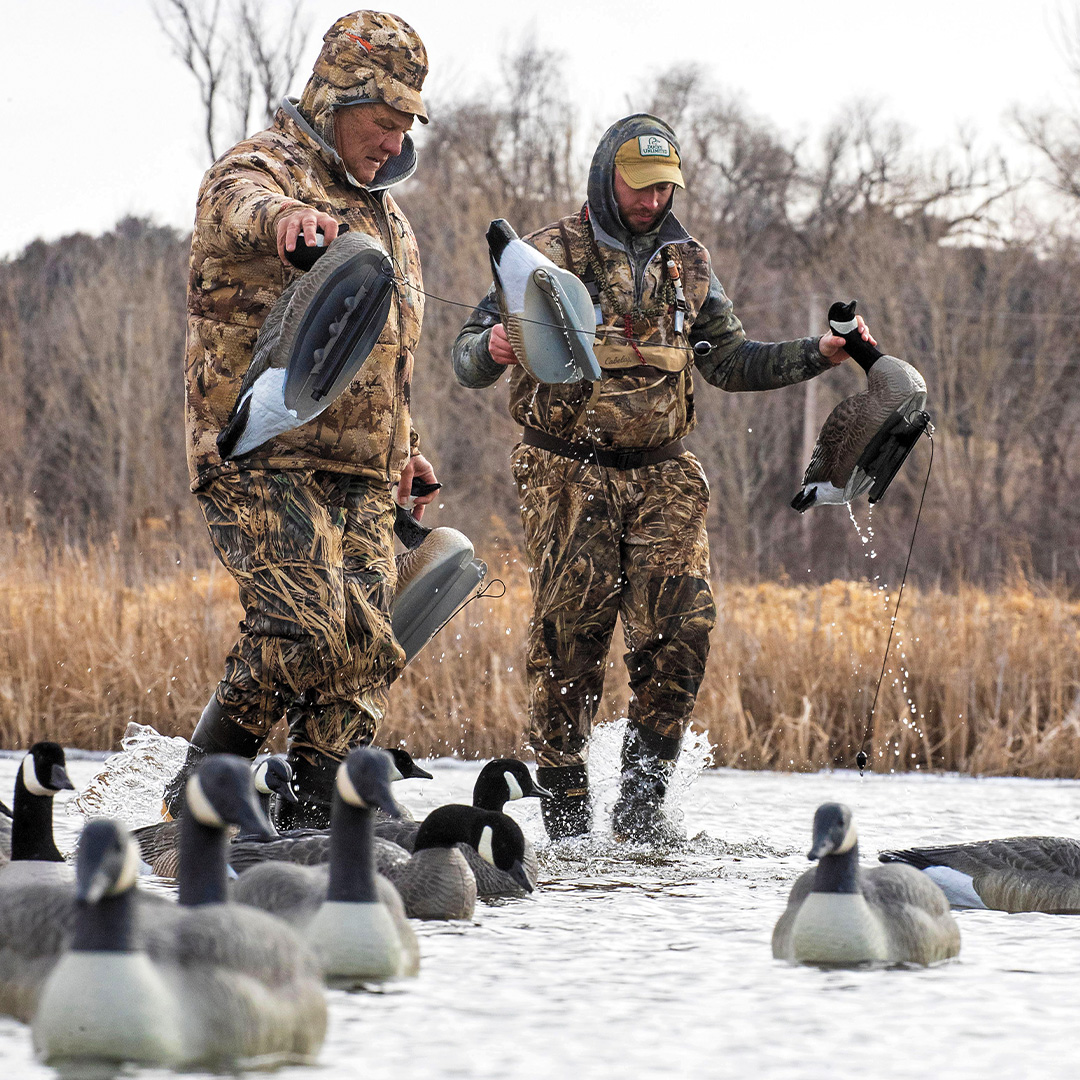
I was pretty proud of myself two years ago, during a day-after-Christmas hunt. The walk in was 400 yards long, through black darkness and black needlerush marsh that held onto my legs like toddlers begging for attention. I was half-spent when I got to the marsh pond, but I thought that was pretty good. It meant I had half a tank left.
But the next morning I could barely lift my legs. My hip flexors were on strike. My bursa sacs were close to bursting. Body parts I didn’t know I had were hurting. I’d been an on-again, off-again weightlifter and bike rider for 20 years, but it clearly wasn’t enough. In the wake of that suffer-fest, I devised a workout regimen targeted to duck hunting. To help me power through tough marsh and muck slogs, I use resistance bands looped around a foot as I drive each knee to my chest, working on the very muscles I’ll need to muscle my way to distant blinds. I have more resistance bands looped through eyebolts sunk into the wall of my basement. To keep my canoe-hoisting and decoy-bag hauling shoulder and back muscles season-opener ready, I literally imagine myself dragging boats through the woods and lugging decoys as I knock out sets of chest and shoulder presses designed for the exact angles I use in the field.
When it comes to staying fit, do whatever it takes. “The only reason I go to the gym is so I can keep duck hunting,” Sawyer told me. His strategy is to keep his cardio fitness at peak levels without overdoing it. “As we get older, there are certain thresholds you shouldn’t cross,” he explains. At his age and physical condition, he knows he shouldn’t let his heart rate go over a certain number of beats per minute. (Your doctor can help you calculate your maximum safe heart rate.) He tailors his treadmill workouts so that he can exercise safely for longer and longer periods of time, monitoring his heart rate and strengthening his cardiovascular fitness without crossing a dangerous threshold.
And I bet Sawyer, just like me, imagines himself powering through the mud as the gym sweat drips into his eyes.
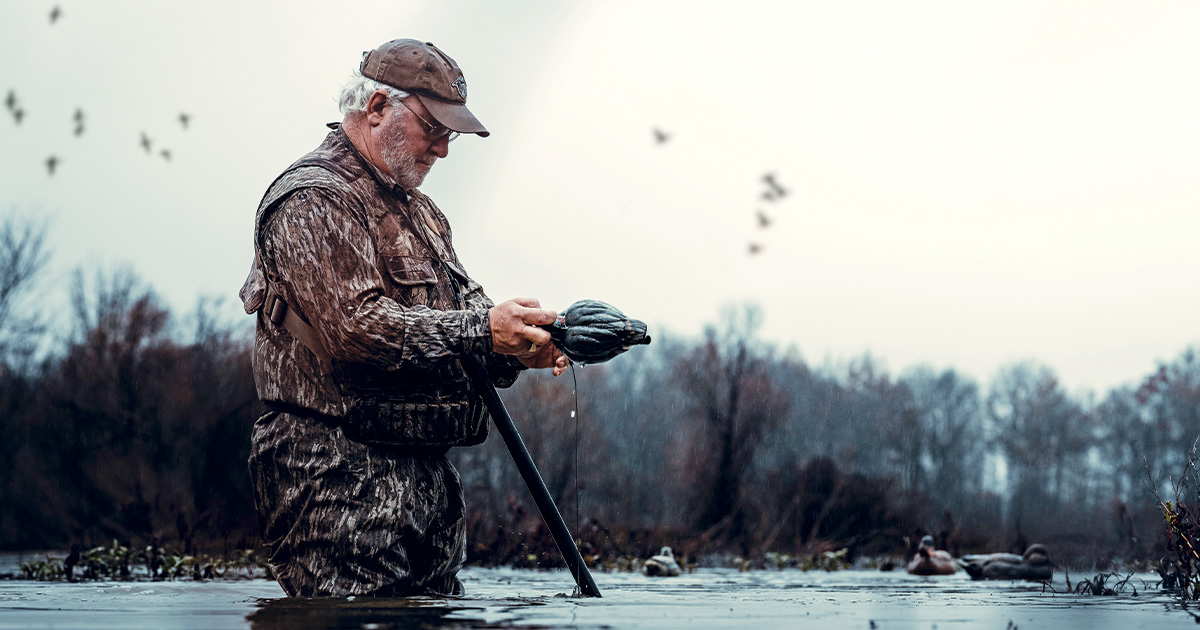
Don’t let vanity prevent you from enjoying mornings in the marsh. Using a wading staff will help you stay upright and dry. And taking advantage of modern gear that is light, warm, breathable, and waterproof will keep you comfortable when the weather is nasty.
I remember the first time I was confronted with the reality of my lengthening years. I was having my driver’s license renewed, and at the Division of Motor Vehicles there was a nice lady taking down my information.
“Height?” she inquired.
“Five-seven,” I answered.
“Weight?”
“Maybe 175. Maybe more.”
“Eye color?”
“Green.”
“Hair color?”
“Brown.”
She looked up from the computer terminal and didn’t miss a beat.
“Try again, honey.”
Harsh. Being honest about this whole aging process isn’t the most fun you’ll ever have, but straight-up assessments are critical. That certainly goes for planning for the costs of waterfowling. Duck and goose hunting doesn’t have to be expensive, but it costs more than pickleball, and there’s just no way around it. Planning for the activities you love should be right up there with planning for health care and dining-out costs in any retirement funding matrix.
“As you approach retirement, you know your income is going to look a little different,” Lawrence says. “Before you quit working, think about some of the things you know you’re going to need, and start stocking up.” Lawrence is a fan of high-quality shotgun shells, so when he saw a sale on Boss waterfowl rounds, he loaded up. He’s upgraded waders and analyzed where he stood on trucks and boats well in advance of turning out the office lights for the last time. “If you know you’ll need a new truck, or if you’re planning on a new boat, pull the trigger on those purchases in time to have any debts paid off by the time you clock out from your job for good,” he says. “You don’t want to take on more debt when you’re ready to make the jump.” Especially not when loan payments could be funding duck hunting trips.
I’m not staring retirement in the face, but I still have a few strategies that I think will come in handy once the paychecks aren’t coming in. For years I’ve stashed a couple hundred bucks a month into a no-fee online savings account I call my “guides account.” (If you see my wife, Julie, please keep this information between us.) It’s automatically debited, so I never really miss it. But that’s where I go for the occasional guide fee or lodge bill or airline ticket for trips afield. I plan on making such automatic debits a part of my income stream in retirement as well.
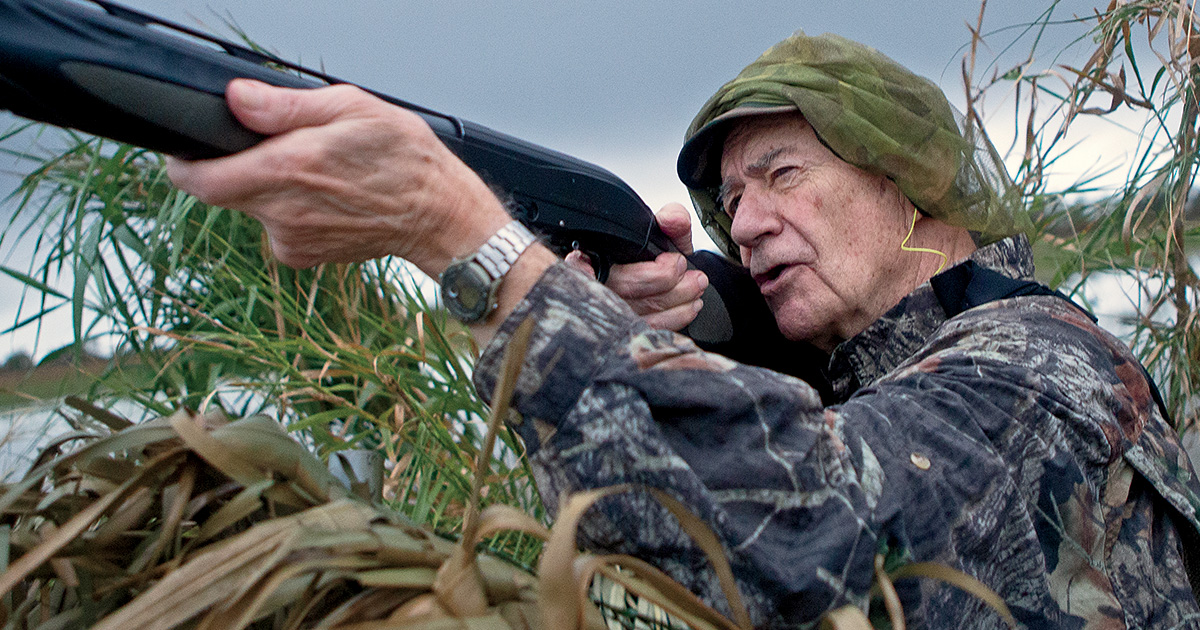
The good news is that once you’re retired, you’ll probably have much more time to spend in the blind, hunting with family and friends and enjoying the natural resources that DU members have been working to conserve for decades.
For Lawrence, staying after the ducks requires that he pay close attention to staying comfortable. “I grew up with rubber waders and Army surplus gloves, but I couldn’t hunt like that today,” he says. “As you get older, comfort is definitely part of the equation.” Being smart about gear means putting together a high-quality hunting kit that keeps you warm and dry and as nimble as possible. And while it’s true that the top-shelf brands in the waterfowl gear world aren’t cheap, today’s best gear will last for years. “You’ll stay after it a lot longer if your hands and feet are warm and your waders aren’t hanging off your ass,” Lawrence says. Gearing up for comfort and mobility is critical as you age. When you’re staring at a new pair of lightweight breathable waders, or a new duck buggy, and fretting over the cost, know that each day you spend laughing in the rain or making it to the blind without falling in the mud means you’re much more likely to do it again.
Being smart about gear also involves taking a hard look at the gear you’ve always used and building out a kit that takes into account groaning knees and creaking backs. I’ve long been a fan of hunting from a canoe, but hoisting my trusty 83-pound boat on top of the truck isn’t getting any easier. Recently, I picked up a matched pair of Old Town Solo Sportsman canoes that weigh just over 50 pounds each. I bought a bed extender canoe rack so I don’t have to lift the boats any higher than my waist. Pure bliss.
I’ve also signed on to the wading staff crew. For the last few years, vanity has kept me from using a wading staff to navigate tricky impoundment ditches and swamp crossings. As I learned the hard—and wet—way, however, vanity gets you face-down in the beaver swamp, and there’s nothing particularly youthful about that. Last year, I found a stout beaver-gnawed stick about six feet long. I drilled a quarter-inch hole two inches from the fat end of the stick and then looped a length of braided paracord through the hole. I can easily clip the staff to my wader belt and let it trail in the water behind me, ready for instant deployment. And deploying a cool beaver stick wading staff takes a little bit of the humble edge off of needing one in the first place. Vanity is tough to shake, after all.
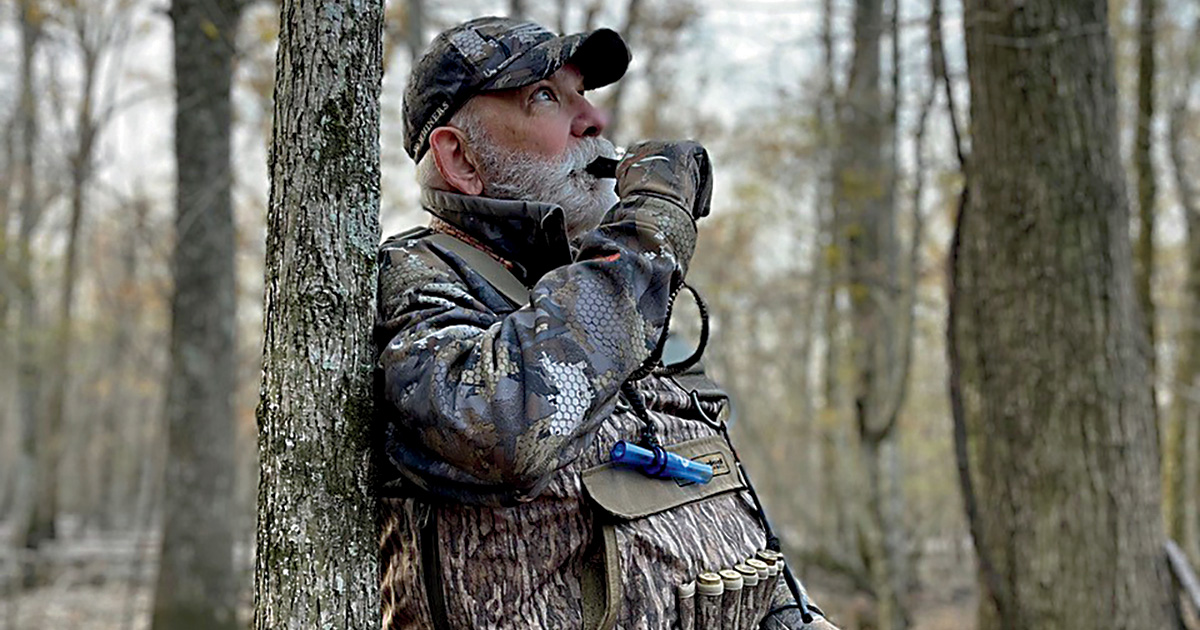
Yes, I realize I just gave you my spiel on cutting weight and bulk from your hunting kit, and now here’s a suggestion to tote wooden decoys? Well, yes. Let me explain.
I recently ordered a half-dozen hand-carved wooden decoys—five wood ducks and a hooded merganser—from a favorite carver who’s turned into a friend. I hunt a lot of small beaver swamps and ponds, and having decoys made by a pal is going to add a layer of meaning to my hunts. As far as the extra weight goes, I’ll only carry those wooden woodies to places where I don’t have to haul them more than a hundred yards or so. I’m not that old, not yet.
Here’s my thought process behind that largely out-of-character purchase. As I’ve gotten ever-so-slightly, almost imperceptibly older, I’ve grown a bit more particular about where and how I hunt. I’m not dialing back on aspiration—I have my bucket list, just like you do—but I’ve come to understand that I care more about some hunting styles and locations than others, so I’m focusing more on those that tug at my soul. And I’m thinking strategically about how to imbue my hunts with a bit more gravitas, perhaps. Hunting over hand-carved decoys is one way to do that. Blowing a call made by a friend is another. Dialing up my duck cooking chops also helps keep my waterfowling fuel tank filled.
And somewhere along the way, I know I’ll get another dog. That’s a sure-fire way to keep a duck hunter in the game, although I’m not looking forward to middle-of-the-night puppy poop runs to the backyard.
Ducks Unlimited uses cookies to enhance your browsing experience, optimize site functionality, analyze traffic, and deliver personalized advertising through third parties. By continuing to use this site, you agree to our use of cookies. View Privacy Policy